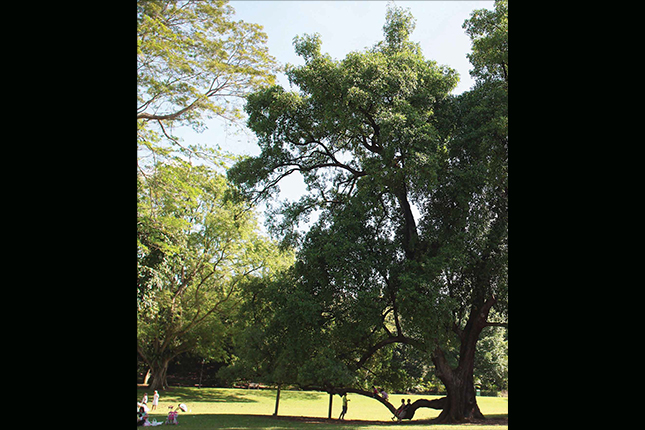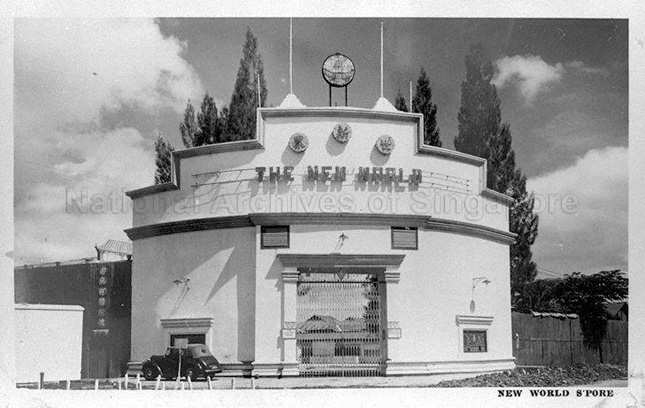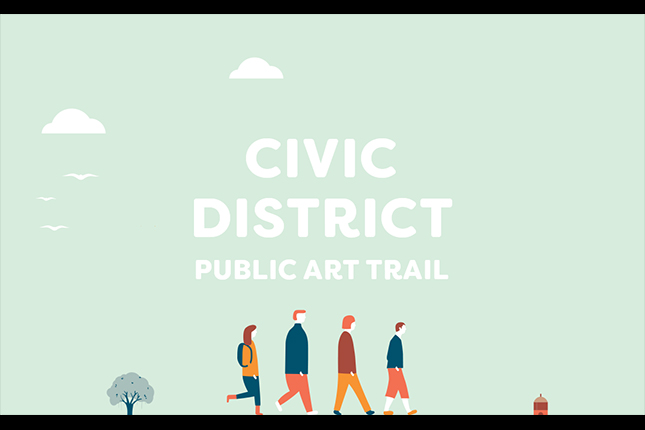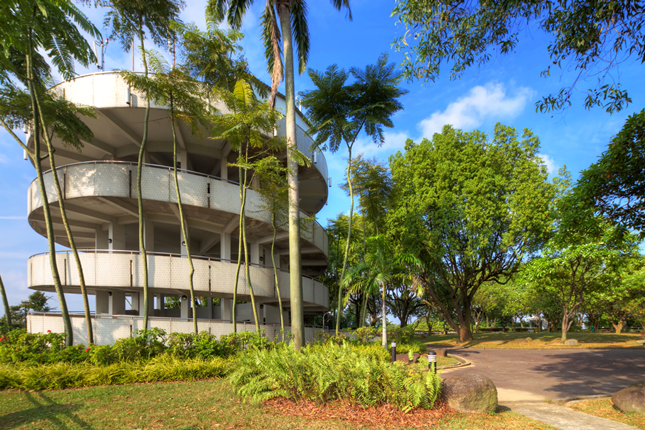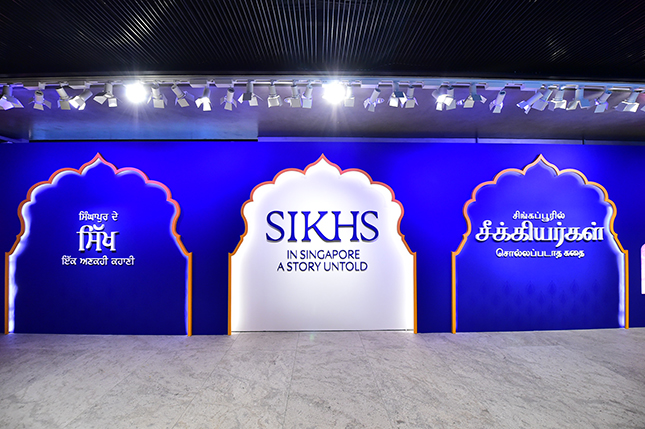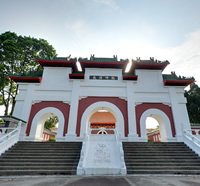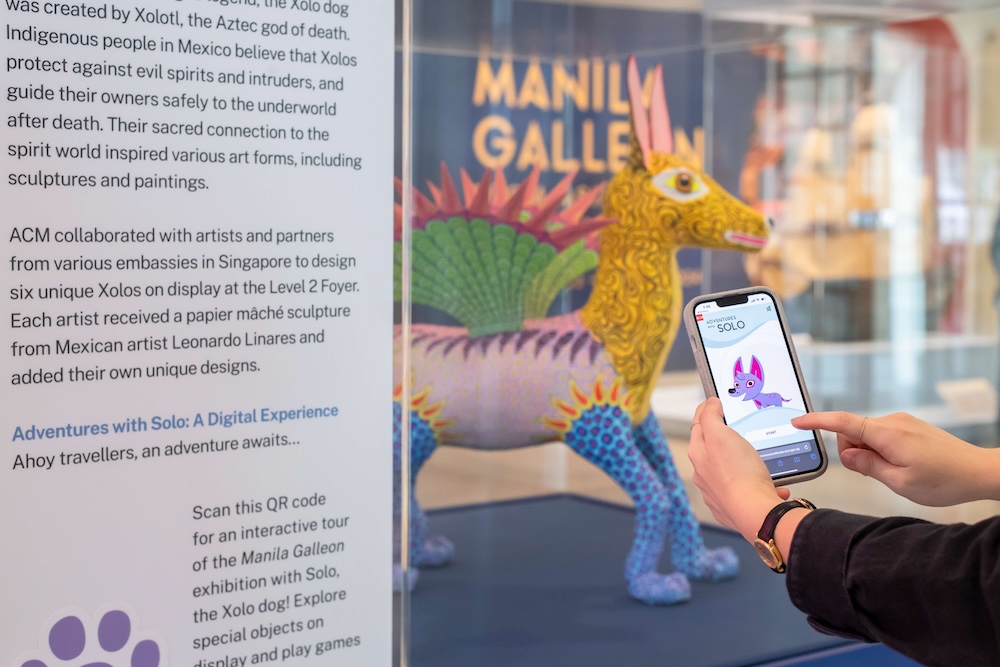Text by Bai Sin Yeou, Manager, Parks Central (Central South), National Parks Board
Singapore’s journey from a Garden City to a City in Nature
The late Prime Minister Lee Kuan Yew planting a tree to
celebrate Tree Planting Day in 1973. Photo credit: Ministry of Information
and the Arts (MITA) through
National Archives Singapore
.
The vision of Singapore as a Garden City was first conceptualised by the late Mr Lee Kuan Yew in May 1967 that kickstarted the greening movement of Singapore in the 1970s. Many considered Mr Lee to be Singapore’s chief gardener who was inspired by the tree-lined boulevards that he had come across overseas. An intensive tree-planting programme was launched by the Parks and Trees Division that saw more than 55,000 new trees planted across the island by the end of 1970. Many of the trees planted during the period are still standing tall today.
In 1976, the Parks and Recreation Department was set up to replace the Parks and Trees Division. The National Parks Board was subsequently established in 1990 and expanded in 1996 to take the lead in managing, developing and enhancing Singapore’s parks, park connectors and roadside greenery. Today, Singapore is one of the greenest cities in the world. The lush urban greenery that we have is a result of sustained and dedicated efforts to green up Singapore over the past few decades. As we transform into a City in Nature, we will further restore nature into the urban environment and bring people closer to nature.
An important pillar of the City in Nature vision, the OneMillionTrees movement aims to plant one million more trees across Singapore by 2030. Trees help to provide shade and reduce the urban heat island effect, providing a much-needed respite for city dwellers. They are also important carbon dioxide and are part of the solution to mitigate the effects of climate change. For urban fauna, trees increase the ecological connectivity between fragmented habitats, allowing animals to move from one green space to the other.
This photo-essay will bring you through the Civic District to explore some of the majestic trees that have witnessed our city’s progress over the years.
A map depicting the locations of the iconic trees mentioned
in this photo-essay.
Rain Trees (Samanea saman)
Location: Istana main gate
Lofty Rain Trees outside the Istana greet visitors from all
walks of life.
The journey begins at the grand main gate of the Istana where a row of lofty Rain Trees graces the entrance. Planted in the 1970s at the request of the late Prime Minister Lee, these Rain Trees had the honour of welcoming the different Presidents of Singapore and greeting visitors to the Istana, from foreign delegates to members of the public. Rain Trees are generally fast-growing and can reach up to 25 m in height. Their umbrella-shaped crowns provide pleasant shade to passers-by along Edinburgh Road and serve as a green lung of the Orchard area.
Originally from tropical America, Rain Trees were first reportedly introduced into Singapore in 1876 and planted extensively along major roads, expressways and parks for their shade-providing benefits. In the evenings or before rainy weather, their small leaflets will fold up to direct the rain water straight into the soil. It is also this characteristic that gives this species the common names “Rain Tree” and “Pukul Lima” (which means 5 o’clock in Malay).
Angsana Trees (Pterocarpus indicus)
Location: School of the Arts
“The Seed” art sculpture now stands at where the
original tree once was, welcoming students into the school’s
compound.
On the steps of the School of the Arts (SOTA) once stood an iconic Angsana tree known as the SOTA tree or the Tree of Knowledge. The tree was preserved during the development and building of the school and was incorporated into the design of the steps leading up to the building. Although the tree stood tall for almost 40 years, it ultimately could not stand the test of time and succumbed to structural defects. Two days before the removal of the tree, the school held a small farewell ceremony for the tree where students put up a lively performance and recounted their memories of the tree.
The legacy of the tree continues to live on in “The Seed”, an art piece inspired by the seeds of the Angsana tree. The artwork is installed on the exact location where the tree used to stand and continues to welcome the students and visitors to the SOTA campus.
Bodhi Trees (Ficus religiosa)
Location: Singapore Management University Campus Green
The Bodhi Tree was transplanted into SMU’s Campus
Green and is a popular rest spot for students during their lunch
breaks.
A venerable Bodhi Tree resides in the quiet compound of the SMU Campus Green. The tree is believed to be over a hundred years old and started life as a seed planted by a prisoner of the old Bras Basah convict jail. It was uprooted in 2005 when SMU started construction of its campus on the old site of the former prison complex and replanted and integrated into the current SMU Campus Green landscape.
The Bodhi Tree is a medium fig tree that is native to the Indian subcontinent and part of China. It has naturalised in Singapore and can be found growing spontaneously. The leaves have a distinctive tail-like tip and are spirally arranged on the branches. This tree is worshipped by the Hindus and Buddhists and is usually planted around temples. It is believed that the Buddha sat under this species of tree when he achieved realisation.
Travellers Palm Trees (Ravenala madagascariensis)
Location: Raffles Hotel
The Traveller’s Palm tree is an iconic feature of Bras
Basah Road leading up to the entrance of the Raffles Hotel.
The entrance of the Raffles Hotel and Bras Basah Road is dotted with towering Traveller’s Palm trees, which also inspired the symbol of the Raffles Hotel. Its leaves grow in an East-West orientation and served as a natural compass for travellers in the past. They were also useful as rainwater collects at the base of the leaves, providing much-needed thirst relief.
The name “Traveller’s Palm” is a misnomer as the plant is not a true palm. While its growth form has a palm-like appearance, it is actually a closer relative of the Bird of Paradise ( Strelitzia reginae ) and the Banana plant ( Musa sp.). The paddle-shaped leaves fan out evenly in a welcoming gesture to passers-by. Similarly, as Singapore slowly eases the COVID-19 safe management measures, we hope to once again welcome visitors back to our City in Nature.
Belinjau Trees (Gnetum gnemon)
Location: Civilian War Memorial
The Belinjau trees standing at attention, almost as if
saluting the lost civilian lives in World War II.
The Civilian War Memorial, located in War Memorial Park, is a national monument that commemorates the lives of the civilian victims of World War II. The footpath leading up to the monument is lined with Belinjau trees on both sides. Native to Southeast Asia and Western Pacific Ocean islands, the Belinjau tree can grow up to 20 m tall and the kernels of the seeds can be made into delicious belinjau crackers.
The Belinjau trees were specifically chosen to plant in the park due to their conical shape that bear resemblance to the War Memorial. Their straight and upright form looks almost as if they are standing at attention and saluting the civilians who lost their lives in the war. Similarly, the landscape around the park complements the monument and evokes feelings of solemnity.
Green tunnel lined with Rain Trees (Samanea saman)
Location: Along Connaught Drive
Connaught Drive is lined with Rain Trees on both sides, some
of which are NParks Heritage Trees.
Another famous sight of Rain Trees lies before the entrance of Esplanade Park. The two rows of Rain Trees were thought to have been planted since the late 1880s, during the time when tree planting was formalised by the then Superintendent of the Singapore Botanic Gardens, Nathaniel Cantley. Some of the key events witnessed by these trees include Singapore’s declaration of de facto independence from British colonial rule in 1963 and the first National Day celebrations held at the Padang in 1966.
Presently, the Rain Trees’ lush canopy provides a picturesque framing of the stately colonial buildings on the opposite side of the Padang and creates a cooling ‘green tunnel’ that runs through the heart of the city. In 2016, 22 of the Rain Trees were endorsed as Heritage Trees, forming the “Avenue of Heritage Trees”. Find out more about Heritage Trees here .
Cannon Ball Trees (Couroupita guianensis)
Location: Esplanade Park
The flowers of the Cannon Ball Tree are unusual and
spectacular, drawing visitors to see them up close in person.
The Cannon Ball Tree in Esplanade Park is an impressive sight to behold. With a girth circumference of almost 3 m and flower stalks branching out from its main trunk, one would be drawn closer to take a closer look at this unusual tree. As its name suggests, the Cannon Ball Tree produces large, round fruits on its massive trunk that bear similarity to cannon balls. This growth form of bearing fruits on the main trunk is known as cauliflory. The fruits take 18 months to develop and will remain on the trunk for a year or more before they eventually mature and fall off. The large, showy flowers are used by Hindus in Singapore for worship while in Sri Lanka, they are often used as offerings at Buddhist shrines and temples.
Angsana Trees (Pterocarpus indicus)
Location: Esplanade Park
The five Angsana trees were transplanted into Esplanade Park
to recreate the iconic “Gor Zhang Chiu Kar”.
Besides the Rain Trees and the Cannon Ball Tree, Esplanade Park is also home to the famous five Angsana trees near the Lim Bo Seng Memorial. This site was a popular dating spot between the 1960s and 1980s and is affectionately known as “Gor Zhang Chiu Kar” in Hokkien, which translates literally to “under the shade of five trees”. It was often a stopover for those who were heading to the Satay Club, a food centre nearby at that time.
Angsana trees are large deciduous trees that were introduced to Singapore in the early 19th century and planted widely around the island due to their fast growth and dense, dome-shaped crowns that served as excellent shade providers. Unfortunately, the original five ‘Gor Zhang Chiu Kar” trees had to be removed in the 1990s due to a fungal disease outbreak and to prevent further spread of the disease. In 2015, NParks were able to recreate the nostalgic dating spot by transplanting five disease-resistant Angsana trees from Upper Serangoon Road. A piece of history is thus preserved at the very spot, inviting families and weekend picnickers to revisit fond memories.
For more information on the tree species mentioned in this essay, visit NParks Flora & Fauna Web here .
Join in on Singapore’s greening initiatives!
If you have enjoyed this photo-essay and would like to learn more about the trees in the Civic District, join them on their bi-monthly Civic District Tree Trail guided walk. Be notified of upcoming walks by subscribing to the NParksBuzz e-newsletter here or embark on your own Do-It-Yourself tour using NParks’ Civic District Tree Trail e-guide which can be downloaded here .
You can also join NParks’ OneMillionTrees movement to contribute to a greener Singapore. Follow them on social media or learn more about upcoming tree planting sessions here .
About Partner
Bai Sin Yeou is a Parks Manager with National Parks Board. A keen environmentalist, she juggles her daily responsibilities of ensuring that the parks are well-maintained, whilst attending to public feedback with a smile.
Follow NParks on Facebook , Instagram , LinkedIn , Telegram , TikTok , Twitter and YouTube to get the latest updates.
All photos, unless otherwise stated, were taken by Bai Sin Yeou.
This article was developed for Singapore Heritage Fest 2022.






